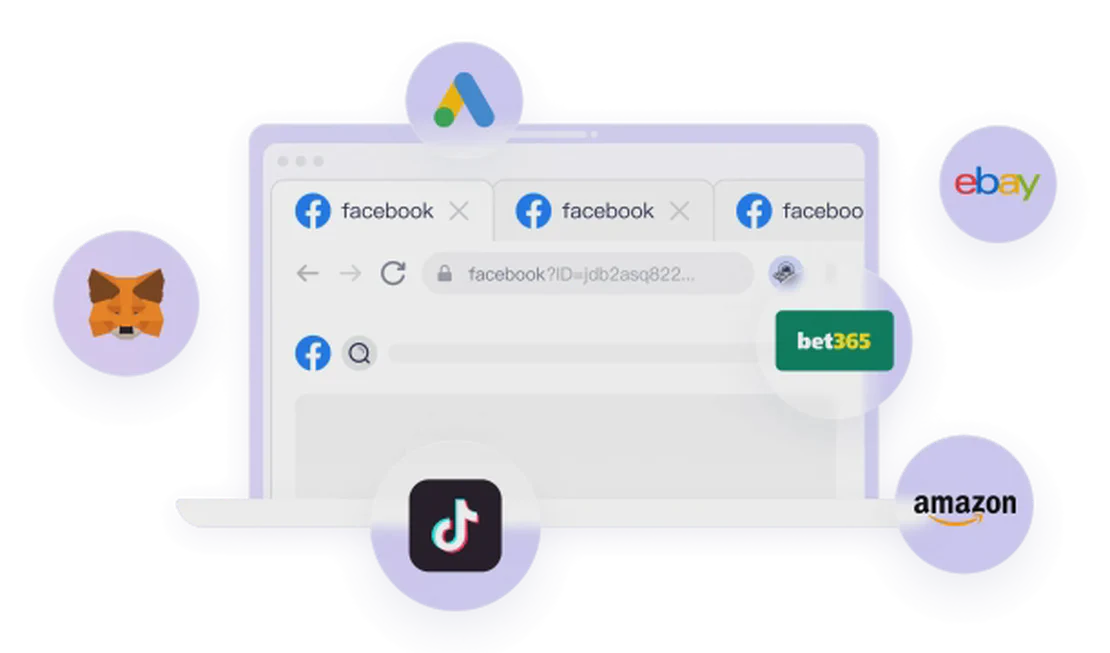IP-Hey (iphey.com) is a clean yet powerful online tool designed to detect privacy leak risks in your browser environment. It quickly analyzes your IP address, browser fingerprint, hardware information, and software configuration to help you understand how much of your digital footprint you are exposing to the outside world.
10 Q&A about IP-Hey and Browser Fingerprinting
1. What information does IP-Hey primarily detect? IP-Hey detects your online environment from multiple dimensions, including: IP address, geolocation, WebRTC leaks, browser information (UserAgent), hardware fingerprints (such as Canvas, WebGL, Audio), and software configurations (such as system time, language, fonts, plugins, etc.).
2. What is an IP address, and why does it reveal my location? An IP address is your device’s unique identifier on the internet, similar to a home address. Your Internet Service Provider (ISP) assigns an IP address to your network. By querying IP address databases, websites can approximate your country, city, and ISP information.
3. What is a browser fingerprint? Is it unique? A browser fingerprint is a unique identifier created by collecting various configuration details from your browser (e.g., UserAgent, screen resolution, installed fonts, plugins, Canvas rendering data). While a single piece of information (like screen resolution) may not be unique, combining dozens of such data points can very likely create a globally unique “fingerprint,” enabling precise user tracking.
4. What is a Canvas fingerprint, and how does it work? Canvas fingerprinting is a common browser fingerprinting technique. A website instructs your browser to draw a small, hidden piece of text or graphics using the HTML5 Canvas API. Because different operating systems, graphics cards, and font configurations result in minute differences in the rendered output, these differences can be converted into a hash value, becoming part of your device’s fingerprint.
5. What is the WebRTC leak that IP-Hey detects? WebRTC (Web Real-Time Communication) is a technology that allows browsers to conduct peer-to-peer audio and video calls. However, if not configured properly, WebRTC can leak your real IP address, even if you are using a proxy or VPN. IP-Hey can check your WebRTC status to determine if this leak risk exists.
6. Can websites really know what fonts I have installed on my computer? Yes. Websites can use JavaScript to detect which fonts your browser supports. This font list varies from person to person, especially if you have installed additional design or office software, making your font list very unique and an important identifier in your browser fingerprint.
7. How is hardware information (like WebGL, Audio) obtained? Your browser can access some of your hardware information for rendering web pages and processing multimedia. For example, a WebGL fingerprint gathers information about your graphics card model and drivers by rendering a 3D graphic. An audio fingerprint processes an audio sample to obtain characteristics of your sound card and drivers. Together, this information forms your hardware fingerprint.
8. What does it mean if my “IP Time” and “System Time” do not match? IP-Hey checks both the time in the timezone of your IP address (IP Time) and the time set on your operating system (System Time). If they don’t match—for instance, if you’re using a proxy in another country but haven’t changed your system time—it becomes a very obvious signal of “disguise,” easily flagged by risk control systems.
9. Am I safe if I disable cookies? Disabling cookies can prevent traditional cookie-based tracking, but it’s far from enough. Modern websites increasingly rely on cookieless tracking techniques, such as browser fingerprinting. Even with cookies disabled, websites can still identify and track you through Canvas, fonts, WebGL, and other information.
10. How can I prevent being tracked by these technologies? To effectively prevent tracking, you need to hide or modify the various parameters that make up your browser fingerprint and ensure that all parameters are logically consistent with each other. Manually changing these parameters is very difficult and prone to errors.
Protect Your Digital Identity with FlashID
After understanding how tools like IP-Hey can easily obtain our digital fingerprints, the need for privacy protection becomes particularly urgent. This is where you need a professional solution.
FlashID is such a powerful fingerprint browser. It does more than just hide your IP address; it addresses the root problem of browser fingerprinting.
- Create Isolated Browsing Environments: FlashID allows you to create multiple, completely isolated browser profiles, each with a unique and authentic browser fingerprint (including Canvas, WebGL, fonts, timezone, etc.).
- Prevent Fingerprint Recognition: It modifies and masks your fingerprint information, making you appear to websites as a regular, unrelated visitor.
- Ensure Environmental Consistency: FlashID automatically matches the timezone, language, and other information of the IP address location, preventing mismatches like “IP Time” vs. “System Time” and making your disguise seamless.
If you need to manage multiple online accounts, conduct market research, or want to thoroughly protect your online privacy, FlashID is your ideal choice against digital tracking. With FlashID, take control of your every digital footstep.
You May Also Like
